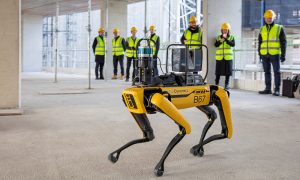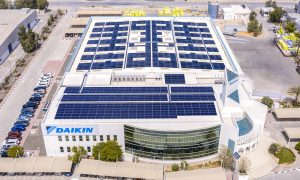Event Review: Trimble’s The Construction Summit 2018
Trimble’s The Construction Summit 2018 explores how BIM and other digital technologies can improve the construction process

Returning for its fourth edition, Trimble’s The Construction Summit 2018 was held at the Westin Mina Seyahi Beach Resort and Marina on September 18, with hundreds of delegates attending a full-day conference that focused on how BIM and other digital technologies can be adopted as tools to drive change within the construction industry.
With the event bringing together developers, engineers, architects, contractors and other key stakeholders to discuss how advanced software and hardware is used to optimise each step of the construction process, Big Project ME spoke to the organisers to understand the aims of the summit.
“Organising the Construction Summit Powered by Trimble was an exciting process over many months that gave me a look behind the scenes of some of the most complex projects in the world with the people and tools that make them possible,” said Oscar Wendel, from the Construction team at Trimble.
“Projects featured included the Museum of the Future, Hyperloop One and the Warner Bros. World and panel discussions. More than 30 speakers spoke at the conference on the theme ‘Digital Transformation Powering Constructability’, on using technology to do things better, as in faster, more cost-efficiently and higher quality. How to improve at each stage, from the planning, design, the construction process, and on to the operations of buildings throughout the lifecycle.”
Big Project ME also spoke to Paul Wallett, regional director of Trimble Middle East & India, who was delighted to see the growth in numbers from last year.
“We anticipated that we would get a high level of interest and the summit did not fail to deliver in terms of both growth as well senior leadership presentations, with very interesting subjects from the legal aspects, contracts management, to exciting current projects such as the museum of the future and longer-term innovation projects like Hyperloop,” he said.
Wallett added that a number of topics discussed were of importance to the industry, and outlined how the discussions will help shape the way the industry thinks about BIM and technology moving forward.
“There certainly were some great questions posed by the moderators, questioning the need for technology, and since the industry is moving at such a fast pace, are we working in a reality or fantasy world? I tend to agree that in the mainstream a lot of these technologies will not be applied straight away, but what they do provide is a disruption to the industry and allow the stakeholders to evaluate whether what we are doing today can be approached in a different way tomorrow. Did we ever imagine having the first ever 3D-printed office building in the world or to be reviewing our designs on a VR headset?”
However, Wallett also pointed out that while the summit showed the level of understanding of BIM within the industry to be quite high, there remained plenty to do to widen its scope and use.
“For the majority of the attendees, it was apparent that the current level of understanding when it comes to BIM is reasonably high. What the industry struggles with is utilising BIM beyond the engineering phase and deeper into execution – this was clearly echoed throughout the audience as well as within many of the panel discussions held during the day.
“Our market is fundamentally different in relation to Europe and the United States, where cost of labour out on the job-site is expensive compared to the relatively cheaper availability here. However, it did seem that this business model was being re-evaluated as not being best practice, and that it is now time to take a serious look at technology that can help link the office to the field and utilise the masses of data that we are collecting.”
With technology developing at a rapid pace, Wallett said he believed the industry would soon realise how to best use it, and reiterated that the industry had to keep pace with these changes to thrive.
“Simply put, it is about connecting the dots and building work processes that allow the flow of data from the early phase of engineering to execution. It was recognised by several panellists – when asked this very same question – that we have an abundance of technology available already. In addition, the industry is moving at a hugely accelerated pace that is hard to keep up. Advanced technology is available at each key stage of construction, and contractors have to take the lead in deploying these tools in order to take advantage of what we have today.
“We had a couple of fantastic case studies that were presented in particular, showing how they had utilised innovative solutions that helped them overcome significant engineering challenges. I would hope to see more showcase presentations next year telling more success stories which compelled other companies to follow suit,” Wallett concluded.

























